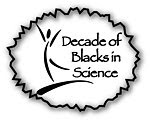I delivered my talk and fielded some great questions. It was during the Q&A of my talk that I became certain that I would definitely go on to pursue my Ph.D. in Animal Behavior. But little did I know (at the time) that the nice woman who calmed my fears and progressed my slides would be the one to direct me on that path. Zuleyma Tang-Martinez, is how she introduced herself me - and she too worked with voles. That name didn’t ring a bell, but when she informed me that she recently changed her name from Halpin, then it became all too clear to me that I was standing before one the most-referenced researchers in rodent behavior. Her research with mice, gerbils, and voles included questions relating to social behavior, population biology, and most notably of chemical communication. I was all too familiar with her work on habituation-dishabituation responses. I was studying chemical communication - everyone in my lab was. The Halpin Method* - which she developed while in graduate school, was one of two protocols (the other is the Johnston Method) researchers used to measure differences in behavioral responses of animal subjects to odors and chemical signals from other animals. Meeting her was a big deal, indeed.
What’s more she had been a major champion for diversity within the society and the discipline. She served as the Society’s President from 1993-1994. During her tenure, she created the (Ethnic) Diversity Fund. The fund, which accepts voluntary contributions from members, helps defray the cost of the meeting registration for students from under-represented groups to attend the international conference. I was fortunate to have received the scholarship to attend that very meeting. She also founded the Latin American Affairs Committee and co-coordinated Turner Undergraduate Diversity Program of the Society.
She has received numerous awards for service related to teaching, outreach and inclusion. In 2007, she received the Animal Behavior Society Extemporary Service Career Award. In recognition of her scholarship and service, she achieved the rank of Full Professor of Biology at the University of Missouri-St. Louis in 1994. More recently she received Quest Award for Outstanding Research Contributions in animal behavior and behavioral ecology from the Animal Behavior Society. Her response to receiving the award: “It is my hope that, as the first Latina-American to receive this honor, I can serve as a role model, encouraging the next generation of scientists of color to pursue careers in animal behavior.”
I can certainly say that she has been for me.
* The Halpin Method: Halpin, Z. T. 1974. Individual differences in the biological odors of the Mongolian gerbil (Meriones unguiculatus). Behavioral Biology 11:253–259.
 This post is part of the Latino Heritage Month Edition of Diversity in Science Carnival - Celebrating the people of science, technology, engineering and mathematics!
This post is part of the Latino Heritage Month Edition of Diversity in Science Carnival - Celebrating the people of science, technology, engineering and mathematics!
















1 comment:
Very Good website. I like the contents. From www.gifts2hongkong.com.
Post a Comment